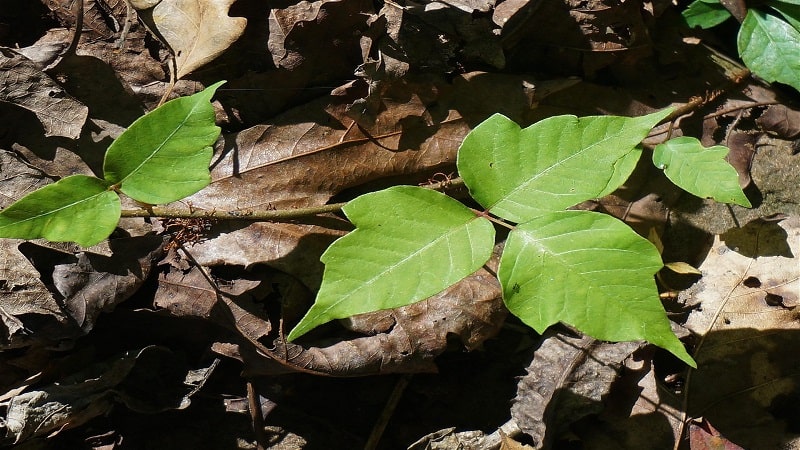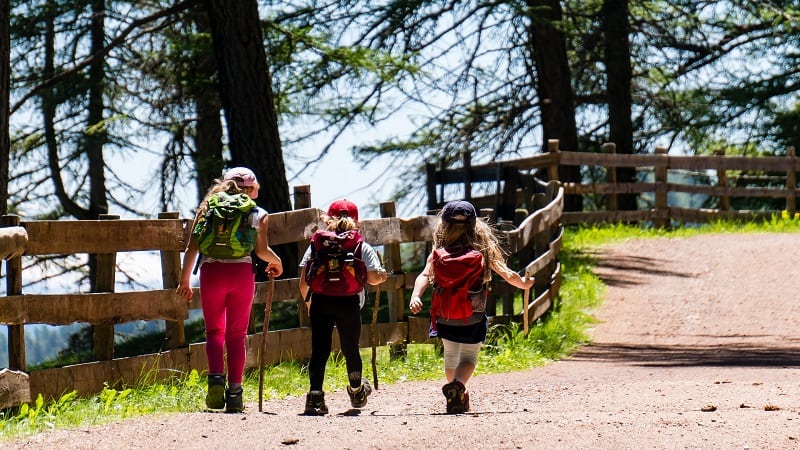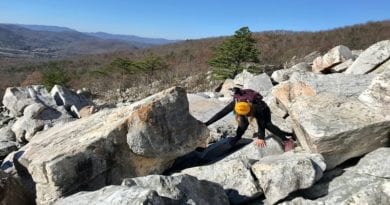Hiker’s Rash: What it Is, How to Treat It & How to Prevent It
Hiker’s rash – known by doctors as exercise-induced vasculitis – is an itchy, red rash that can appear on one or both legs after hiking or extended exercise.
You may also see this rash referred to as golfer’s rash, Disney rash or golfer’s vasculitis. It’s a form of cutaneous small vessel vasculitis.

This rash is bright red, bumpy and itchy. It typically appears on lower legs. However, it can stretch from the ankle to the knee on exposed skin.
Although it may look alarming, this rash only affects the surface of your skin. Importantly, while it may be very uncomfortable, it won’t make you sick.
This rash is typically red although it can appear purple, and the texture of your skin may change over the course of a few days with the rash.
Hiker’s rash generally resolves on its own. It’s not contagious. In most cases, it will resolve within 3 to 10 days without treatment.
What Causes Hiker’s Rash?
This rash is caused by prolonged periods of hiking, typically during warm and humid weather. The strenuous exercise can cause inflammation.
However, what’s really happening lies beneath the surface. The small blood vessels in your legs are working overtime when you’re hiking.

As a result, the vessels can become tired and work inefficiently. This, in turn, causes the inflammation that leads to hiker’s rash.
It’s characterized by a reddish rash on your lower legs, raised or bumpy skin, and is sometimes associated with itching or burning, too.
How Long Does Hikers Rash Last?
The rash itself and the irritating symptoms will usually resolve within 3 to 10 days. However, the skin discoloration can last for 3 to 4 weeks, sometimes longer.
Hiker’s rash is harmless, even though it may feel incredibly irritating at the time. This type of rash shouldn’t cause any other bodily symptoms.

If your symptoms get worse or aren’t resolving, you should contact a doctor. You may have something other than hiker’s rash.
Since this rash isn’t caused by external factors, there are no medical treatments. Fortunately, there are things you can do to alleviate symptoms.
How Do You Treat Hiker’s Rash?
This rash can be annoying with the way it itches and sometimes even burns. If you develop this rash, here’s how you can manage the symptoms.
Stay Out of the Heat

If you develop hiker’s rash, one way to stop it from getting any worse is to get out of the heat, and stay out of the heat until symptoms get better.
Part of the reason this rash occurs is because the small vessels in your legs are working too hard to cool your skin down.
This causes them to stop working properly, and blood and other fluids pool in your lower legs. This is what causes the rash and symptoms.
Take a Break from Exercise
Another way to both prevent hiker’s rash from getting worse and to treat the symptoms is to avoid exercise or excessive walking until it’s gone.
This isn’t to say you can’t walk at all, but you shouldn’t resume your strenuous activities if you want the rash to go away.
Elevate Your Feet

As noted above, blood and fluid pooling in your lower legs is part of what causes hiker’s rash and the associated symptoms.
Another way to treat the symptoms is to rest and keep your feet and legs elevated as often as possible.
Wear Compression Socks
Compression socks can help treat hiker’s rash by helping improve the circulation and blood flow in your lower legs.
Wearing compression socks will help your body’s natural process of circulation and help remove the excess fluid that’s causing your rash.
Apply Cool, Wet Towels to the Area

If you’re experiencing a lot of itching and/or burning with hiker’s rash, you can treat the symptoms by applying cool, wet towels to the area.
Some people just experience itching, some experience burning, and some experience both. A cooling towel is another great option to cool the area.
Soak Your Legs in a Cool Epsom Bath
If you’re experiencing pain with your hiker’s rash, you can soak your feet, ankles, and lower legs in a cool bath of Epsom salts for 20 minutes.
This should help with pain you may feel from swelling and pooling of fluids.
Topical Treatments for Hiker’s Rash

Although most treatments are natural, you can use a few topical treatments to treat symptoms. If you are experiencing a lot of itching, try these:
* Hydrocortisone cream
* Calamine lotion
* Anti-itch or cooling gel
* Witch hazel
How Can I Prevent Hiker’s Rash?
Although women over the age of 50 get hiker’s rash most often, anyone can get it. Here are some ways to prevent hiker’s rash.
Stay Hydrated

Staying hydrated is essential for lots of bodily functions while hiking, including helping prevent hiker’s rash.
Drink plenty of water and/or electrolyte mix, like DripDrop ORS, to help keep your body hydrated. Avoid taking in too much sodium.
Wear Compression Socks
Compression socks can help prevent hiker’s rash by helping aid circulation in your legs. They can prevent the fluid buildup that leads to a rash.
It’s a great idea to wear compression socks during your hike. If you don’t want to wear them the whole time, bring a pair with you.
Massage Your Legs Often

Massaging your legs has a similar effect as wearing compression socks. Massage can be used in tandem with the compression socks.
Massaging your lower legs and calves can also aid in proper circulation. It also helps your muscles recover, so it’s a win-win.
Cover Your Skin
Heat is a contributing factor in hiker’s rash, and many people only get it on exposed areas of skin. You can help prevent it by covering your skin.
Cover your lower legs with long socks, compression socks, or hiking pants or hiking leggings. If nothing else, wear sunscreen.
What Other Rashes Affect Hikers?
As a hiker, you should educate yourself on a few types of rashes, including heat rash, poison ivy, oak, and sumac, athlete’s foot, and Lyme disease.
Heat rash and athlete’s foot are both annoying rashes, but compared to the others in this section, they’re mostly harmless.

You should learn what poison ivy, oak, and sumac look like. Brushing up against these plants can cause painful, blistering rashes that spread by touch.
Lyme disease is a serious tick-borne illness that starts after a tick bite and is characterized by a rash that looks like a bullseye around the bite.
Wrap-Up Notes: Hiker’s Rash
Of all the rashes you can get as a hiker, hiker’s rash is one of the most innocuous. It may be annoying, but that’s generally about all it is.
Hiker’s rash only occurs on the lower legs and will resolve on its own within 3 to 10 days. No medical treatment is typically necessary.

However, you can treat this rash by getting out of the heat and sun, stopping exercise, elevating your feet and using cold compresses for symptoms.
If you believe you have hiker’s rash and you notice it’s not getting better or is accompanied by other symptoms, contact your doctor to rule out other maladies.
Disclaimer: The words in this blog, and in any linked materials, are not intended as medical advice. Always seek the guidance of your doctor with any questions regarding your health or a medical condition.

Erin Gifford has completed more than 300 hikes in Virginia. She is also the author of three hiking guidebooks from Falcon Guides. Need help finding a hike? Check out the Trail Finder feature or send Erin an email at [email protected].




